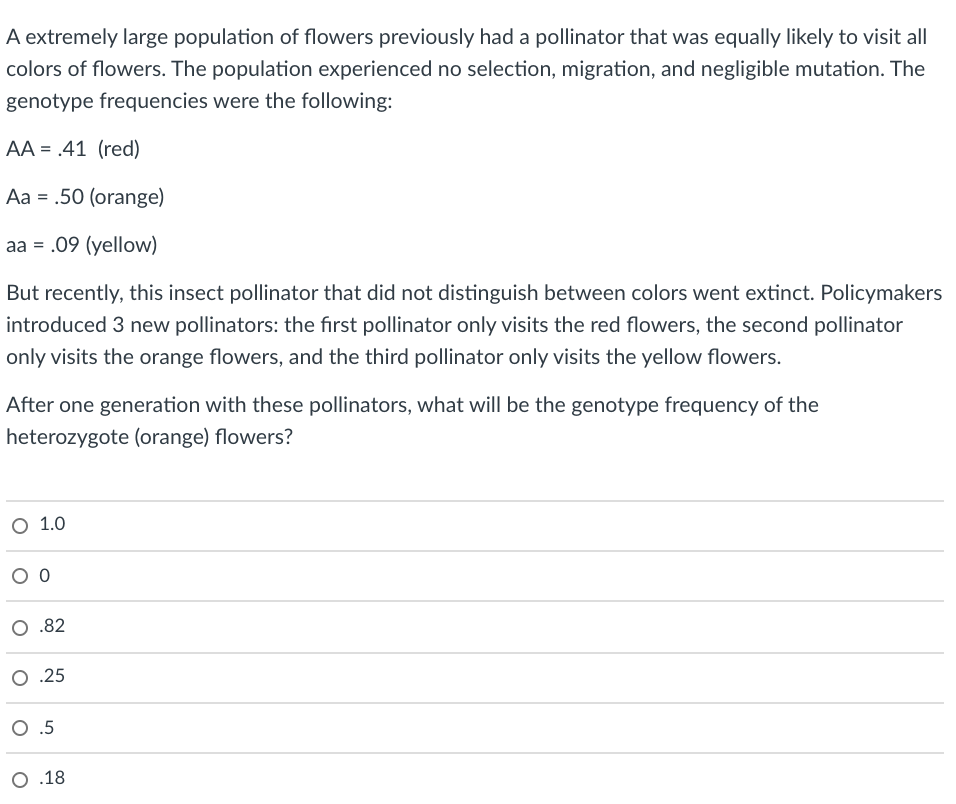A extremely large population of flowers previously had a pollinator that was equally likely to visit all colors of flowers. The population experienced no selection, migration, and negligible mutation. The genotype frequencies were the following: AA = .41 (red) Aa = .50 (orange) aa = .09 (yellow) But recently, this insect pollinator that did not distinguish between colors went extinct. Policymakers introduced 3 new pollinators: the first pollinator only visits the red flowers, the second pollinator only visits the orange flowers, and the third pollinator only visits the yellow flowers. After one generation with these pollinators, what will be the genotype frequency of the heterozygote (orange) flowers? O 1.0 O .82 O .25 0.5 О.18
Genetic Variation
Genetic variation refers to the variation in the genome sequences between individual organisms of a species. Individual differences or population differences can both be referred to as genetic variations. It is primarily caused by mutation, but other factors such as genetic drift and sexual reproduction also play a major role.
Quantitative Genetics
Quantitative genetics is the part of genetics that deals with the continuous trait, where the expression of various genes influences the phenotypes. Thus genes are expressed together to produce a trait with continuous variability. This is unlike the classical traits or qualitative traits, where each trait is controlled by the expression of a single or very few genes to produce a discontinuous variation.

Trending now
This is a popular solution!
Step by step
Solved in 3 steps









